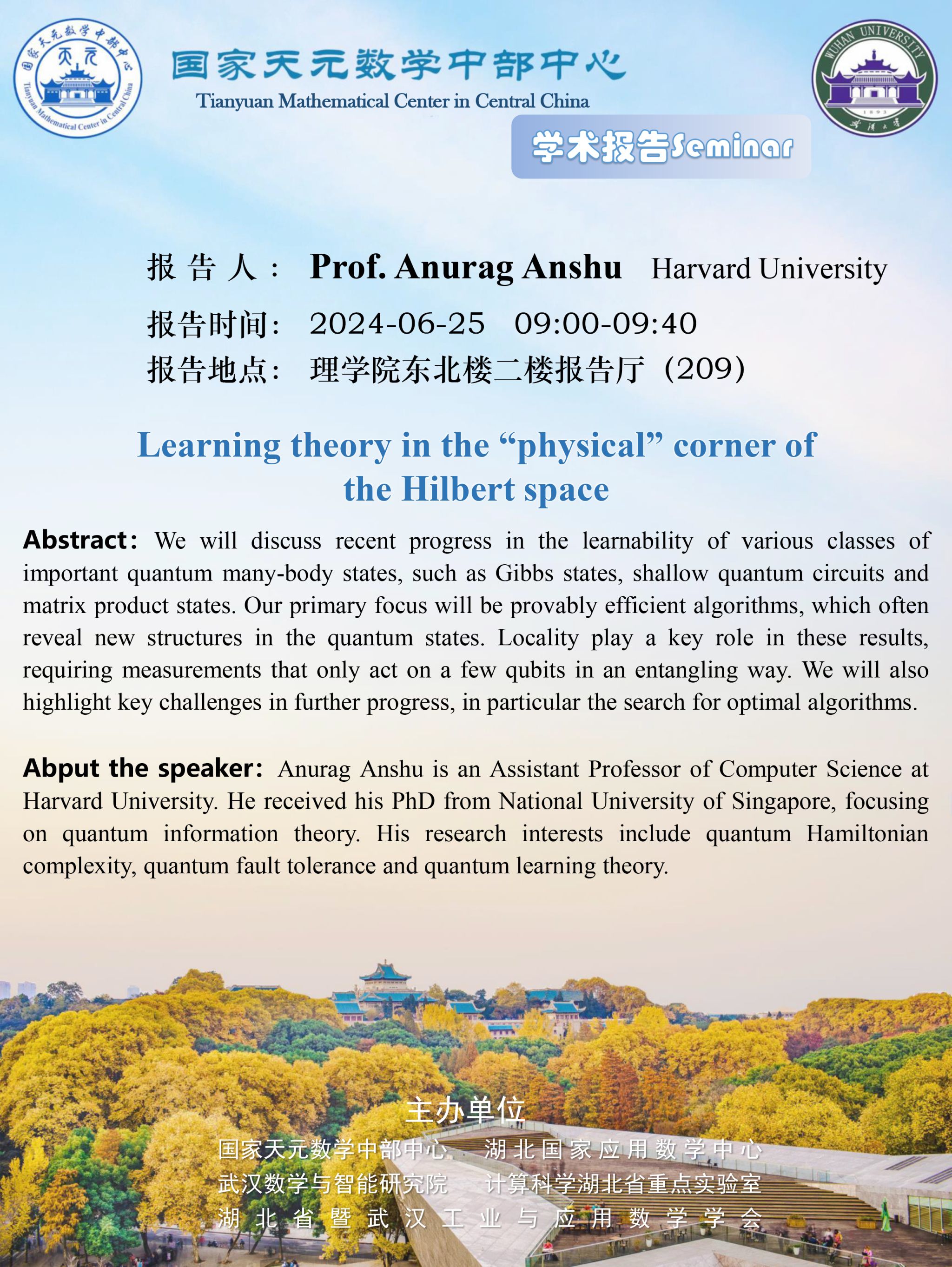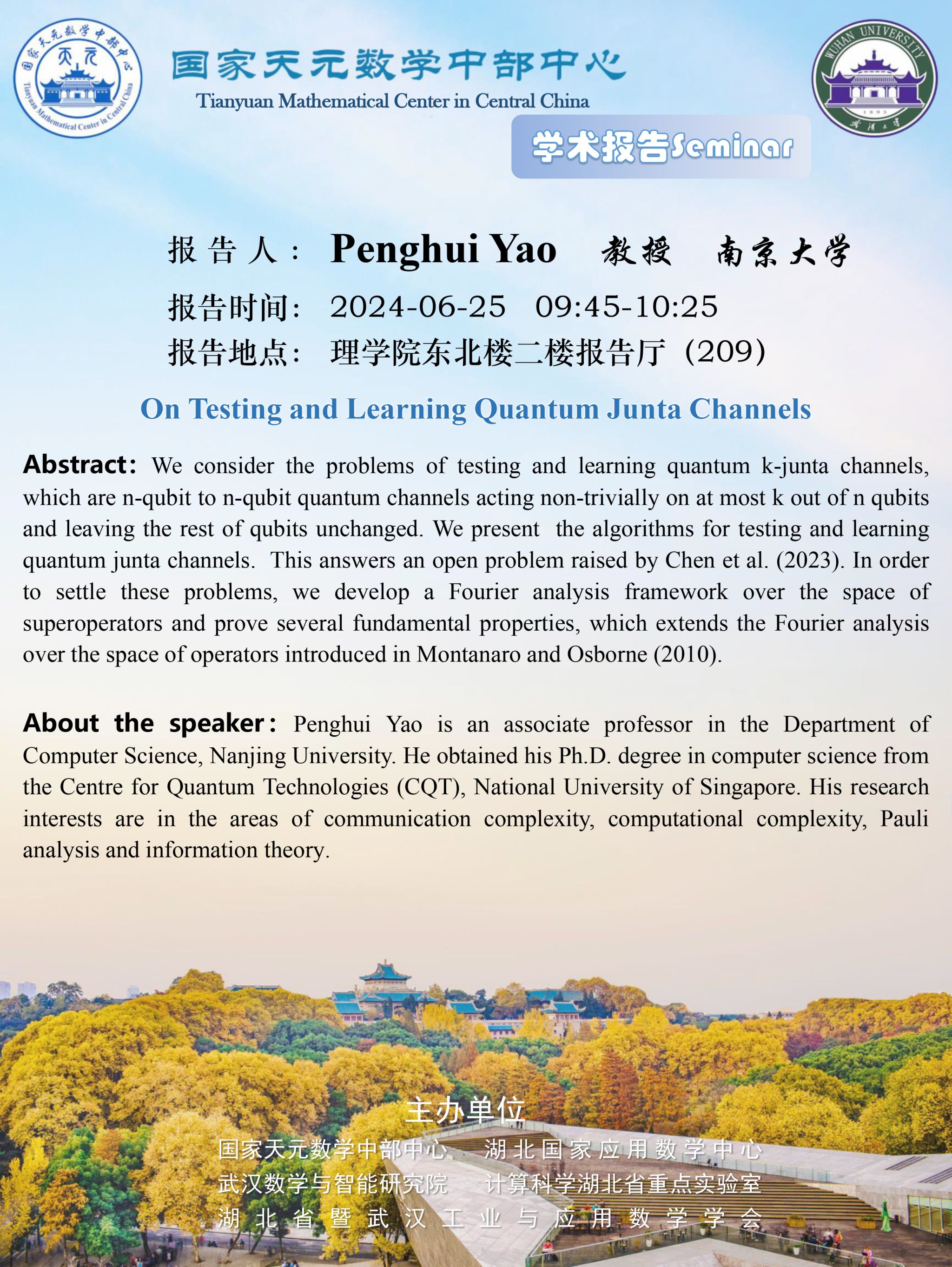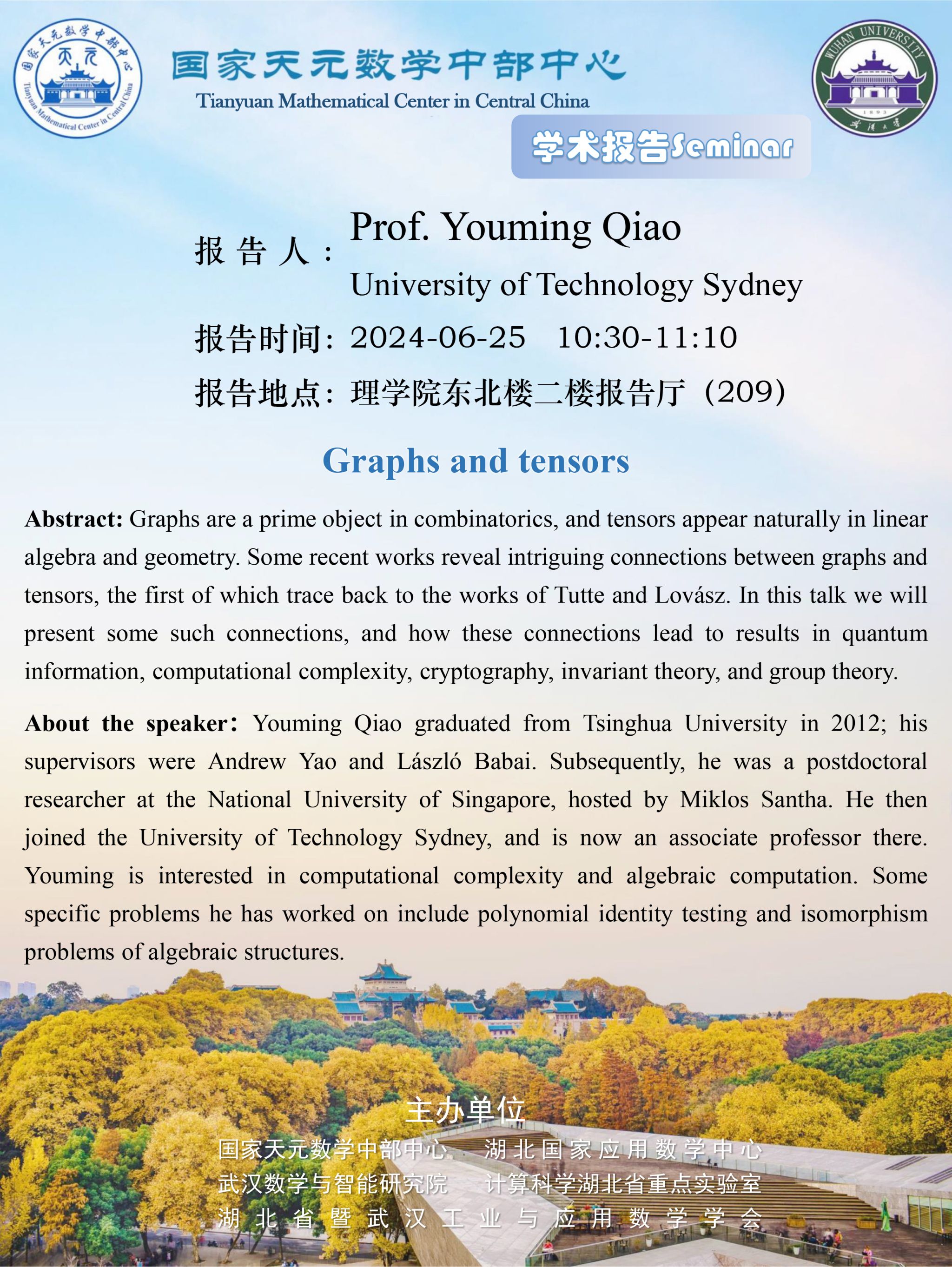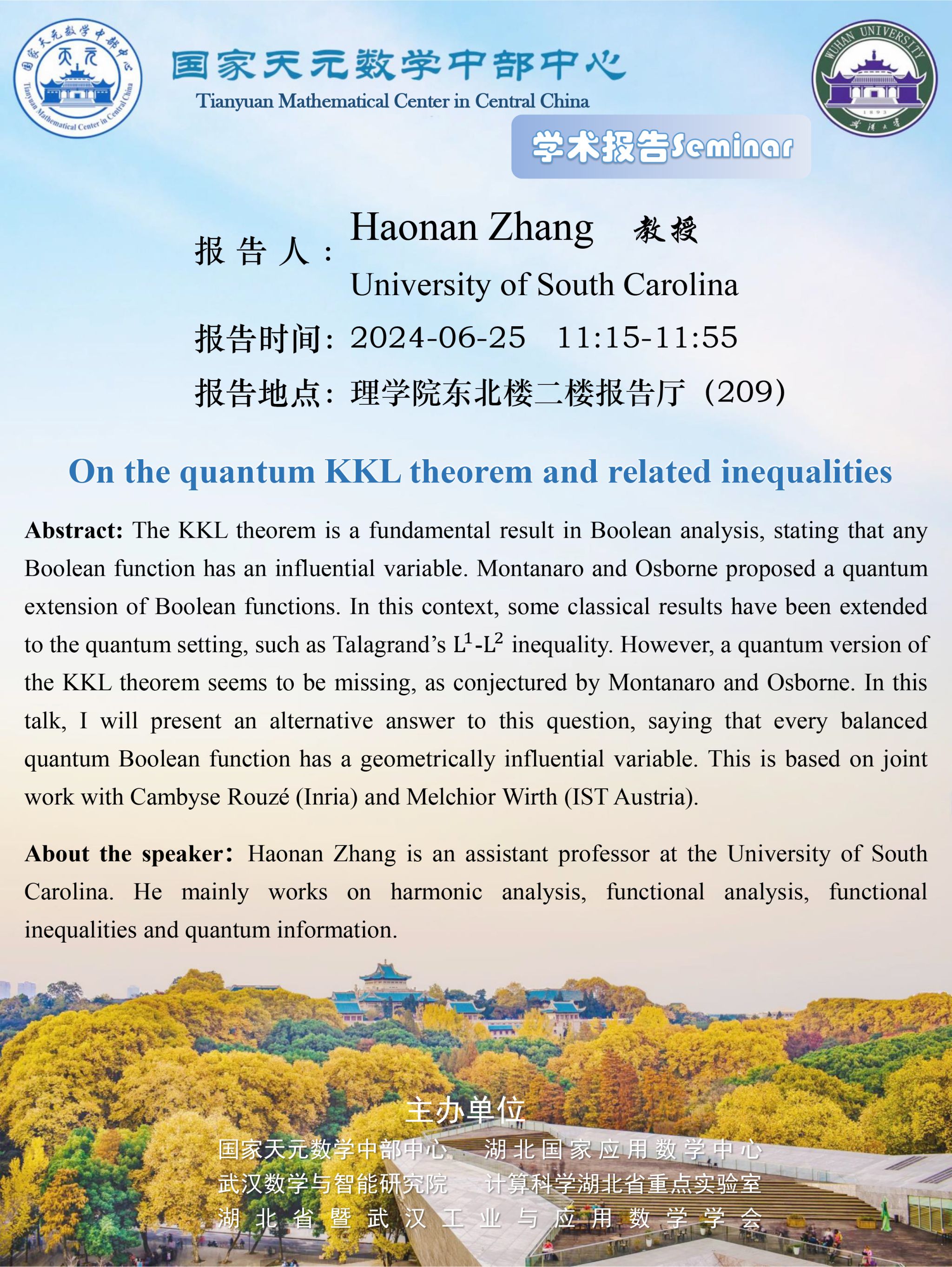Quantum Computing Day
报告日期:2024年6月25日
报告地点:理学院东北楼209报告厅
Learning theory in the “physical” corner of the Hilbert space
报告人:Prof.Anurag Anshu(Harvard University)
时 间:09:00-09:40
报告人简介:Anurag Anshu is an Assistant Professor of Computer Science at Harvard University. He received his PhD from National University of Singapore, focusing on quantum information theory. His research interests include quantum Hamiltonian complexity, quantum fault tolerance and quantum learning theory.
报告摘要:We will discuss recent progress in the learnability of various classes of important quantum many-body states, such as Gibbs states, shallow quantum circuits and matrix product states. Our primary focus will be provably efficient algorithms, which often reveal new structures in the quantum states. Locality play a key role in these results, requiring measurements that only act on a few qubits in an entangling way. We will also highlight key challenges in further progress, in particular the search for optimal algorithms.

On Testing and Learning Quantum Junta Channels
报告人:Prof.Penghui Yao(Nanjing University)
时 间:09:45-10:25
报告人简介:Penghui Yao is an associate professor in the Department of Computer Science, Nanjing University. He obtained his Ph.D. degree in computer science from the Centre for Quantum Technologies (CQT), National University of Singapore. His research interests are in the areas of communication complexity, computational complexity, Pauli analysis and information theory.
报告摘要:We consider the problems of testing and learning quantum k-junta channels, which are n-qubit to n-qubit quantum channels acting non-trivially on at most k out of n qubits and leaving the rest of qubits unchanged. We present the algorithms for testing and learning quantum junta channels. This answers an open problem raised by Chen et al. (2023). In order to settle these problems, we develop a Fourier analysis framework over the space of superoperators and prove several fundamental properties, which extends the Fourier analysis over the space of operators introduced in Montanaro and Osborne (2010).

Graphs and tensors
报告人:Prof.Youming Qiao(University of Technology Sydney)
时 间:10:30-11:10
报告人简介:Youming Qiao graduated from Tsinghua University in 2012; his supervisors were Andrew Yao and László Babai. Subsequently, he was a postdoctoral researcher at the National University of Singapore, hosted by Miklos Santha. He then joined the University of Technology Sydney, and is now an associate professor there. Youming is interested in computational complexity and algebraic computation. Some specific problems he has worked on include polynomial identity testing and isomorphism problems of algebraic structures.
报告摘要:Graphs are a prime object in combinatorics, and tensors appear naturally in linear algebra and geometry. Some recent works reveal intriguing connections between graphs and tensors, the first of which trace back to the works of Tutte and Lovász. In this talk we will present some such connections, and how these connections lead to results in quantum information, computational complexity, cryptography, invariant theory, and group theory.

On the quantum KKL theorem and related inequalities
报告人:Prof.Haonan Zhang(University of South Carolina)
时 间:11:15-11:55
报告人简介:Haonan Zhang is an assistant professor at the University of South Carolina. He mainly works on harmonic analysis, functional analysis, functional inequalities and quantum information.
报告摘要:The KKL theorem is a fundamental result in Boolean analysis, stating that any Boolean function has an influential variable. Montanaro and Osborne proposed a quantum extension of Boolean functions. In this context, some classical results have been extended to the quantum setting, such as Talagrand's  -
- inequality. However, a quantum version of the KKL theorem seems to be missing, as conjectured by Montanaro and Osborne. In this talk, I will present an alternative answer to this question, saying that every balanced quantum Boolean function has a geometrically influential variable. This is based on joint work with Cambyse Rouzé (Inria) and Melchior Wirth (IST Austria).
inequality. However, a quantum version of the KKL theorem seems to be missing, as conjectured by Montanaro and Osborne. In this talk, I will present an alternative answer to this question, saying that every balanced quantum Boolean function has a geometrically influential variable. This is based on joint work with Cambyse Rouzé (Inria) and Melchior Wirth (IST Austria).
